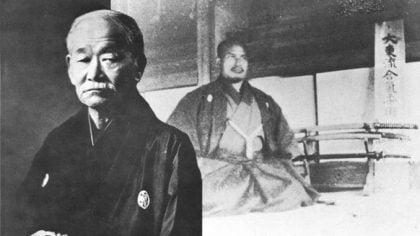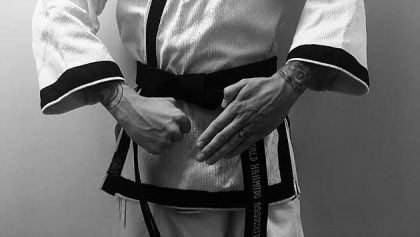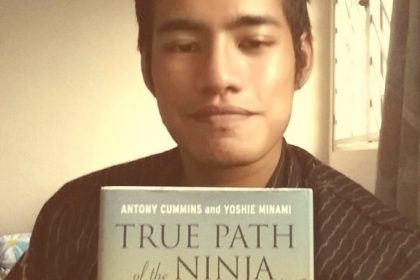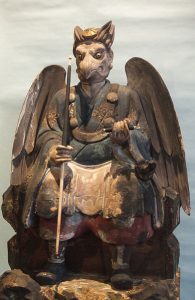Do you know which martial art today is related to the historical ninja?
Find out what are the 52 martial arts in this article! We begin by explaining the conditions and deductions to qualify martial arts into this list. Then we sort martial arts into groups: martial arts with verified lineages and modern derivatives.
The Conditions: How Do We Know Which Martial Arts Were Used by Ninjas?
To come up with a list of martial arts used by the shinobi, we first need to determine the conditions and deductions based on facts. Here are three conditions, followed by the explanation.
1. Samurai martial arts are logically ninja martial arts
Contrary to popular belief, the ninja were mainly from the bushi-class and not a peasant-class counter movement. They were mostly samurai (including ashigaru and jizamurai) who specialised in espionage and covert operations. Therefore, martial arts used by the ninja were logically the same as samurai martial arts, perhaps with some modifications.
These articles explain in detail why this is the basis, talks about the differences between historical ninjutsu and bujutsu, and opens the inclusion of modern ninjutsu schools:
- The Truth About Ninja Martial Arts – Historical Sources [Part 1]
- Evolution of Ninja Martial Arts – Modern Ninjutsu Schools [Part 2]
2. Only martial arts created in Japan are included
Because ninja and ninjutsu were a specifically Japanese phenomenon, any martial art outside of Japan will not be included.
Even though there were pre-modern spies in other asian civilisations, they were not ninja. Ninjutsu as a system was unique to feudal Japan. Here’s more about ninja history based on validated ninja manuals.
3. Martial Arts outside mainland Japan are omitted
Martial arts outside of mainland Japan were not used by the samurai, and by extension, the shinobi. In particular, martial arts from the Ryukyu islands, including Okinawa, were not historically part of Japan. They had their own kingdom, history and warrior elites.
With these three conditions in mind, here’s a list of martial arts that have varying connection to the shinobi of both Sengoku and Edo period.
Classical Martial Arts in Japan Before 1868
Japanese koryu martial arts are classical battlelfield combat systems that can be traced to the feudal period, any time before the Meiji period in 1868. These martial arts have their documents scrunitised and some times carbon-dated by a panel of experts to prove a continuity in lineage and more. And many of the koryu here would have been directly used by samurai who were also involved in ninja activities.
The core systems contained in many koryu, such as hand-to-hand combat and swordsmanship, have been mentioned in the Bansenshukai. However, just because a koryu martial art has these systems does not guarantee that an individual shinobi has trained in that specific brand of koryu. None of the historical manuals have specified this.
Hence, the koryu list is from deduction. If you want martial arts training that is similar to that of the feudal period in Japan and has its lineage verified, this is it.
Note: This is an incomplete list of koryu. Some are deliberately omitted due to the obscurity of living practitioners or disputes in leadership and lineage validity. I may have even missed out some unintentionally.
Koryu with comprehensive syllabus
These are classical martial arts that include:
- unarmed combat
- typical samurai weapons (e.g. sword, spear and glaive)
- less-conventional weapons (e.g. spiked truncheon)
- non-combat or warfare strategies (e.g. ressucitation, ninjutsu)
1Tenshin Shoden Katori Shinto-ryu - 天真正伝香取神道流
Tenshin Shoden Katori Shinto-ryu is one of the oldest koryu martial art today. It is also the only one known to include ninjutsu in its syllabus.
Note that historical ninjutsu was never a martial art. The term was used to refer to feudal espionage and subterfuge techniques. In Tenshin Shoden Katori Shinto-ryu, ninjutsu is taught in the advance syllabus and is only defensive in nature.

| Koryu | Tenshin Shoden Katori Shinto-ryu – 天真正伝香取神道流 |
| Systems | • Kenjutsu – swordsmanship • Iaijutsu – sword drawing • Bojutsu – staff techniques • Naginatajutsu– glaive techniques • Sojutsu – spear techniques • Jujutsu – hand-to-hand grappling • Shurikenjutsu– spike-throwing • Ninjutsu – intelligence gathering and analysis • Chikujojutsu – field fortification • Gunbaiho – strategy and tactics • In-yo Kigaku – philosophical and mystical aspects derived from Mikkyo |
| Founded by (in) | Iizasa Choisai Ienao (ca. 1447) |
| Dojo Info | • Chiba Prefecture, Japan – Head Dojo • All other locations & international instructors |
| Website | katori-shinto-ryu.org/ |
2Takenouchi-ryu - 竹内流
Takenouchi-ryu is among the oldest jujutsu classical martial art that still exists in Japan. And it includes a range of weapons in its syllabus.

| Koryu | Takenouchi-ryu – 竹内流 |
| Systems | • Jujutsu – hand-to-hand grappling • Hade – attacking vital points unarmed • Kenjutsu – swordsmanship • Iaijutsu – sword drawing • Bojutsu – staff techniques • Naginatajutsu– glaive techniques • Tessenjutsu – iron fan techniques • Hojojutsu (hobaku) – rope binding/restraint • Sakkatsuho – ressucitation |
| Founded by (in) | Takenouchi Chunagon Daijo Hisamori (1532) |
| Head dojo | Okayama Prefecture, Japan |
| Website | www.takenouchiryu.com/ |
Koryu with only weapons training and warfare strategy
The following classical martial art has no hand-to-hand combat system and instead focuses on a wide range of weaponry and warfare strategies.
3Tatsumi-ryu - 立身流兵法
Tatsumi-ryu includes scouting and reconnaissance as part of its curriculum. This would no doubt be useful for some form of espionage activity during the feudal period.
| Koryu | Tatsumi-ryu – 立身流兵法 |
| Systems | • Kenjutsu – swordsmanship • Iaijutsu – sword drawing • Bojutsu – staff techniques • Yawara – armored and un-armored grappling • Sojutsu – spear techniques • Hojojutsu – rope-binding • Shurikenjutsu– spike-throwing • Shudan Sentoho – esoteric charms & tactics • Monomi – scouting, reconnaissance & observation techniques |
| Founded by (in) | Tatsumi Sankyo (1504-1520) |
| Head dojo | Chiba Prefecture, Japan (other dojos: Australia & France |
| Website | tatsumi-ryu.org/ |
Koryu with unarmed & multiple weaponry training
These koryu martial arts include both unarmed combat and a range of weaponry training.
4Araki-ryu - 荒木流
| Koryu | Araki-ryu – 荒木流 |
| Systems | • Torite Kogusoku – unarmed and armed grappling at close quarters • Tojutsu – swordsmanship • Bojutsu – staff techniques • Naginatajutsu – glaive techniques • Kusarigamajutsu – chain and curved blade techniques • Chigirikijutsu – staff with iron weight on chain technique • Ryofundojutsu – similar |
| Founded by (in) | Araki Mujinsai Minamoto no Hidenawa (ca. 1573) |
| Head dojo | Gunma & Saitama Prefecture, Japan |
| Website | arakiryu.org |
5Asayama Ichiden-ryu - 浅山一伝流
| Koryu | Asayama Ichiden-ryu – 浅山一伝流 |
| Systems | • Kenjutsu – swordsmanship • Iaijutsu – sword drawing • Bojutsu – staff techniques • Kamajutsu – farming weapon – sickle technique • Taijutsu – hand-to-hand techniques |
| Founded by (in) | Asayama Ichidensai Shigetatsu (Tensho: 1573-1593 or Keicho: 1596-1615) |
| Head dojo | Kanagawa Prefecture, Japan |
6Kashima Shin-ryu - 鹿島神流
| Koryu | Kashima Shin-ryu – 鹿島神流 |
| Systems | • Kenjutsu – swordsmanship • Battojutsu – sword unsheathing • Bojutsu – staff techniques • Naginatajutsu– glaive techniques • Sojutsu – spear techniques • Jujutsu – hand-to-hand grappling |
| Founded by (in) | Kunii Kagetsugu & Matsumoto Bizen-no-kami (ca. 1450) |
| Head dojo | Ibaraki Prefecture, Japan (other dojos) |
| Website | www.kashima-shinryu.jp/English/ |
7Shindo Yoshin-ryu - 新道楊心流
| Koryu | Shindo Yoshin-ryu – 新道楊心流 |
| Systems | • Jujutsu – hand-to-hand grappling • Kenjutsu – sword art (dai, sho) • Kogusoku – knife technique • Tantojutsu – short knife techniques • Tetsubo – spiked truncheon techniques • Kogai – small weapon (hair arranger used as weapon) • Torinawa – rope binding technique |
| Founded by (in) | Matsuoka Katsunosuke (1864) |
| Dojo(s) | United States, Japan, Europe |
| Website | www.shinyokai.com |
8Yagyu Shingan-ryu - 柳生心眼流
| Koryu martial art | Yagyu Shingan-ryu – 柳生心眼流 |
| Systems | • Kenjutsu – swordsmanship • Iaijutsu – sword drawing • Bojutsu – staff techniques • Naginatajutsu– glaive techniques • Taijutsu (jujutsu) – hand-to-hand grappling |
| Founded by (in) | Araki Mataemon (early 1600s) |
| Head dojo | Kanagawa Prefecture, Japan |
| Website | http://www.yagyushinganryu.com/ (Sendai line) |
Summary of Other Koryu Martial Arts





Because there are many classical martial arts in Japan, it is impossible to cover them in depth in this article. These koryu are summarised and categorised as follows:
- Presence of both unarmed and weaponry training
- Presence of only weaponry training (but in multiple weapons)
- Focus on only one system (further broken down into unarmed combat, sword combat and non-sword combat)
Koryu with both unarmed & weapon techniques
| Koryu | Systems |
| 9. Hontai Yoshin-ryu jujutsu – 本體楊心流 | • jujutsu • kenjutsu • bojutsu |
| 10. Sekiguchi Shinshin-ryu jujutsu – 関口新心流 | • jujutsu • kenjutsu |
| 11. Sosuishitsu-ryu jujutsu – 双水執流 | • kogusoku (jujutsu) • koshi no mawari (iaijutsu) |
Koryu with techniques in multiple weapons
| Koryu martial art | Systems |
| 12. Kogen Itto-ryu kenjutsu – 甲源一刀流 | • kenjutsu • naginatajutsu |
| 13. Maniwa Nen-ryu kenjutsu – 馬庭念流 | • kenjutsu • naginatajutsu • sojutsu • yadomejutsu |
| 14. Owari Kan-ryu sojutsu – 尾張貫流槍術 | • kenjutsu • sojutsu |
| 15. Shingyoto-ryu kenjutsu – 心形刀流 | • kenjutsu • iaijutsu • naginatajutsu |
| 16. Shinto Muso-ryu jojutsu – 神道夢想流 | • kenjutsu • jojutsu |
| 17. Shojitsu Kenri Kataichi-ryu battojutsu – 初實剣理方一流甲冑抜刀術 | • battokenjutsu – includes iaijutsu and kenjutsu • jojutsu |
| 18. Suio-ryu kenjutsu – 水鷗流 | • iai • kempo (sword art; not fist art) • jo • naginata • kogusoku |
| 19. Tendo-ryu naginatajutsu – 天道流薙刀術 | • kenjutsu • jojutsu • naginatajutsu • kusarigamajutsu |
| 20. Toda-ha Buko-ryu naginatajutsu – 戸田派武甲流 | • kenjutsu • bojutsu • naginatajutsu • sojutsu • kusarigamajutsu |
| 21. Yoshin-ryu – 楊心流 | • bojutsu • naginatajutsu • sojutsu • kusarigamajutsu |
Focus on only one system
Unarmed Combat Only
| Jujutsu |
| 22. Tenjin Shinyo-ryu jujutsu – 天神真楊流 |
| 23. Daito-ryu aikijujutsu – 大東流合気柔術 (restored lineage in 1890) |
Sword Only
| Swordsmanship – Kenjutsu/Iaijutsu/Battojutsu | |
| 24. Hokushin Itto-ryu – 北辰一刀流 – kenjutsu | |
| 25. Niten Ichi-ryu – 二天一流 – kenjutsu | |
| 26. Kage-ryu – 影流 – battojutsu | |
| 27. Kashima Shinden Jikishinkage-ryu – 鹿島神傳直心影流 – kenjutsu | |
| 28. Kashima Shinto-ryu – 鹿島新当流 – kenjutsu | |
| 29. Katayama Hoki-ryu – 片山伯耆流 – iaijutsu | |
| 30. Kurama-ryu – 鞍馬流 剣術 – kenjutsu | |
| 31. Mizoguchi-ha Itto-ryu – 溝口派一刀流 – kenjutsu | |
| 32. Mugai-ryu – 無外流 – iaijutsu & kenjutsu | |
| 33. Muso Jikiden Eishin-ryu – 無双直伝英信流 – iaijutsu | |
| 34. Muso Shinden-ryu – 夢想神伝流 – iaijutsu & kenjutsu | |
| 35. Ono-ha Itto-ryu – 小野派一刀流 – kenjutsu | |
| 36. Shinmuso Hayashizaki-ryu – 神 夢想 林崎 流 – battojutsu | |
| 37. Tamiya-ryu – 民弥流 – iaijutsu | |
| 38. Yagyu Seigo-ryu – 柳生制钢流 – battojutsu | |
| 39. Yagyu Shinkage-ryu hyoho – 柳生新陰流 – kenjutsu |
Non-Sword Only
| Non-sword Weapon |
| 40. Higo Ko-ryu – 肥後古流 – naginatajutsu |
| 41. Hozoin-ryu, Takada-ha – 宝蔵院流 – sojutsu |
| 42. Isshin-ryu – 一心流 – kusarigamajutsu |
Evolved Modern Ninja Martial Arts
For martial arts from Japan that may have evolved from and was influenced by ninjutsu, you can train in either Banke Shinobinoden or Takamatsu-descended organisations (Bujinkan, Jinenkan and Genbukan). These organisations incorporate a ninjutsu mindset to their combat system – unconventional, unpredictable and distraction-based techniques that might make it easier to end the fight and flee.
These are legitimate organisation that have derived some of their martial arts from samurai koryu systems and ninja clans.
Read this for a detailed analysis on modern ninja martial arts. And check out this analysis on the legitimacy of modern ninjutsu schools.
43Banke Shinobi-no-den
The below focuses only on Banke Shinobinoden’s martial art systems; it does not include information on its ninjutsu systems. As mentioned, ninjutsu is historically an espionage system and not a martial art.
| Organisation | Banke Shinobi-no-den |
| Bujutsu Systems | • Ichijyoho-koppojutsu (一乗法 骨法術) • Takenouchi-ryu-koroshiatemi-no-den (竹内流 殺格身之傳) • Jyosui ryu shinto gunden (如水流神道 軍傳) • Izumo shinryu heiho (出雲神流平法) • Shinden fudo ryu kiho (神傳不動流 馗法) • Sankato ryu yoroi doori kumiuchi den (山家当流 鎧徹組討傳) • Shinken muso ryu gunjutsu (真見夢想流 軍術) • Awaka chiden ryu kamajutsu (阿波賀智傳流 鎌術) (retrieved from Banke Shinobi Spain & referenced to Banke Shinobi Japan) |
| Weapons | • Various swords (including katana) • Throwing weapons • Various staffs of different lengths • Sickle and chain (and similar) • Blowgun • Naginata (glaive) • Yari (spear) • Wooden truncheon with iron spiked ball attached • Many others (including arresting implements, rope and archery) |
| Present Head/Representative | Jinichi Kawakami |
| Head dojo | Mie Prefecture, Japan |
44Bujinkan - 武神館
Other organisations that may have derived their martial arts from Bujinkan and altered them for modern western application include Toshindo (by Stephen Hayes) and AKBAN.
| Organisation | Bujinkan – 武神館 |
| Systems | • Togakure-ryu Ninpo Taijutsu (戸隠流忍法体術) • Gyokko Ryu Kosshijutsu (玉虎流骨指術) • Kuki Shinden Happo Bikenjutsu (九鬼神伝流八法秘剣術) • Koto Ryu Koppo jutsu (虎倒流骨法術) • Shinden Fudo Ryu Dakentai jutsu (神伝不動流打拳体術) • Takagi Yoshin Ryu Jutaijutsu (高木揚心流柔体術) • Gikan Ryu Koppojutsu (義鑑流骨法術) • Gyokushin-ryu Ninpo (玉心流忍法) • Kumogakure Ryu Ninpo (雲隠流忍法) |
| Weapons | • Swords (various lengths) • Daggger • Iron fan • Helmet breaker • Staffs (various lengths) • Spear • Glaive • Throwing blades • Sickle and chain (and similar weapons) • Axe • Caltrops • Hand claws • Foot spikes • Others (including blinding powder and firearms) |
| Founder | Masaaki Hatsumi |
| Head dojo | Mie Prefecture, Japan |
45Jinenkan - 自然舘
| Organisation | Jinenkan – 自然舘 |
| Bujutsu Systems | • Takagi Yoshin Ryu Jutaijutsu (高木揚心流) • Gyokko Ryu Kosshijutsu (玉虎流骨指術) • Koto Ryu Koppojutsu (虎倒流骨法術) • Togakure-ryu Ninpo Taijutsu (戸隠流忍法体術) • Kukishinden Ryu Happo Biken (九鬼神伝流八法秘剣術) • Shinden Fudo Ryu Jutaijutsu/Dakentaijutsu (神伝不動流打拳体術) • Jinen Ryu Jissen Kobudo (自然舘) Systems retrieved from Jinenkan Kosei Gogi Dojo |
| Weapons | • Sword • Spear • Glaive • Iron fan • Truncheon • Weighted chain • Staffs (various) • Others |
| Present Head/Representative | Fumio Manaka, Unsui |
| Head dojo | Chibaken, Japan (Other dojo locations) |
46Genbukan - 玄武館
| Organisation | Genbukan – 玄武館 |
| Bujutsu Systems | Basics of Genbukan are said to have evolved from these ryuha: • Togakure-ryu (戸隠流) • Kumogakure-ryu (雲隠流) • Kukishin-ryu (九鬼神伝流) • Gyokko-Ryu (玉虎流) • Koto-ryu (虎倒流) • Gikan-ryu (義鑑流) • Shinden-Fudo-ryu (神伝不動流) • Takagi-Yoshin-ryu (高木揚心流) • Asayama-Ichiden-ryu (浅山一伝流) • Yoshin-Muso-ryu • Tatara-Shinden-ryu • Iga-Ryu • Tenshin-ryu • Daito-ryu (大東流) • Yagyu Shingan-ryu (柳生心眼流) • Mugen Shinto ryu • Kijin Chosui ryu • Tenshin Kyohyo Kukishin ryu Retrieved from Genbukan |
| Founder | Tanemura Shoto |
| Head dojo | Saitama, Japan (Other locations) |
Regular Modern Martial Arts of the Samurai
Because it is still rare for koryu martial arts to be found outside of Japan, you can consider training in modern derivatives of samurai martial arts.
Since these are gendai budo (modern martial arts that were created after the Edo period ended), neither ninja nor samurai trained in these. However, some essence and principles of koryu martial arts used by samurai and ninja still survives in these systems.


| Martial Art | Remarks |
| 47. Judo – 柔道 | Created by Kano Jigoro, mainly from these koryu jujutsu schools: • Tenjin Shinyo-ryu – 天神真楊 • Kito-ryu – 起倒流 (Judo is the successor of this koryu) Organisation in Japan: • Kodokan Judo There are other branches of judo, including the famous sporting derivative, Brazilian Jiujitsu. |
| 48. Aikido – 合気道 | Created by Morihei Ueshiba, mainly from this koryu jujutsu: • Daito-ryu Aiki-jujutsu – 大東流合気柔術 Founder may have some influences from: • Yagyu Shingan-ryu – 柳生心眼流 • Tenjin Shinyo-ryu – 天神真楊流 Some Organisations: • Aikikai (main branch under the Ueshiba family) – International Aikido Federation • Yoshinkan Aikido (founded by Gozo Shioda & used by Tokyo Riot Police) – Aikido Yoshinkan • Tomiki Aikido (founded by Kenji Tomiki & includes competitions) – Japan Aikido Association and Shodokan Aikido Federation There are many other branches of Aikido by students of Morihei Ueshiba. |
| 49. Kendo – 剣道 | Originated from kenjutsu (swordsmanship). Organisations: • International Kendo Federation • All Japan Kendo Federation There are more. |
| 50. Iaido – 居合道 | Originated from iaijutsu and battojutsu (sword drawing). Emphasis on awareness so as to quickly draw the sword and to respond to a sudden attack. Organisations include: • Toho Iaido – The All Japan Iaido Federation • Seitei Iaido – All Japan Kendo Federation • Other schools |
| 51. Jodo – 杖道 (way of the staff) | In modern practice, jodo techniques are taught in a larger curriculum in some classical and modern martial arts like Aikido. Jodo is taught as Seitei Jodo in the All Japan Kendo Federation. |
| 52. Kyudo – 弓道 (way of the bow) | Originated from samurai archery. Organisations include: • International Kyudo Federation • All Nippon Kyudo Federation |
There are certainly more classical and modern martial arts related to the ninja through the samurai. Leave a comment on what I’ve missed out!
There will also be a follow up on non-Japanese martial arts and how to regard them in your quest to be a modern-day ninja or warrior.





